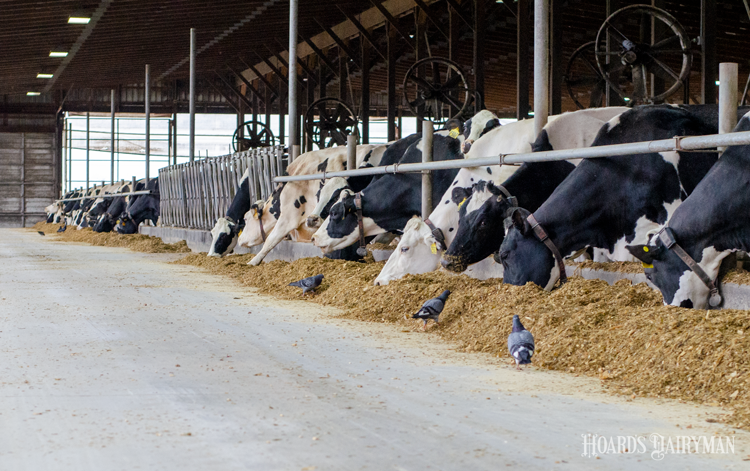
Now that the strange symptoms observed in small pockets of U.S. dairy cattle that first gained widespread attention last month have been attributed to avian influenza, the question turns to how the disease is spreading. Since first being identified on dairies in Texas and Kansas, the disease has subsequently been confirmed in dairy animals in four more states as well as one person, an employee on an affected dairy. (For more details, USDA updates the detection of confirmed cases daily at this page).
Highly pathogenic avian influenza (HPAI) has caused the culling of 85 million birds on poultry farms in the last few years. Those cases have been attributed to migratory waterfowl such as ducks and geese.
It has been reported that a slightly different strain of the same H5N1 virus is affecting dairy cattle, but it appears that all of the dairy cases came from one source. The case diagnosis, which had previously eluded veterinarians and scientists, was finally determined because avian influenza tests were conducted on the affected farms, which had reported dead birds on the property.
Those birds, however, were not the migratory waterfowl deemed responsible in the poultry cases, according to an article in Science. They were species that are more commonly observed around human habitats like “grackles, blackbirds, and pigeons,” the story explained.
Because the virus has not caused high morbidity or mortality in dairy cattle the way it has in poultry, the American Association of Bovine Practitioners (AABP) announced this week that they will be referring to the disease as bovine influenza A virus. They encourage other officials and agencies to do the same. “The AABP does not believe that this disease should be referenced as ‘HPAI in cattle’ or ‘bird flu in cattle’ due to these differences,” AABP executive director Fred Gingrich and president Michael Capel wrote in a statement.
How do we limit it?
Whichever birds are proliferating the virus are likely doing so by spreading droppings in cattle feed and water. The virus has also spread between poultry operations in the past through the wind.
Importantly, it is largely believed that dairy cows are not spreading the virus among themselves. USDA officials have said it may be possible that the virus is shed in the milk and could be transferred during milking, according to the same Science article. This would be similar to how mastitis pathogens are spread. Respiratory transfer does not appear to be occurring, though. The new cases popping up in additional states are attributed to the movement of cattle from affected areas.
In addition to restricting animal movement and following strict quarantine measures, important biosecurity efforts to avoid introducing the virus to your herd include limiting wild bird contact with cows and their feed and water. Addison Carroll and Paul Kononoff from the University of Nebraska offer these tips to help control wild birds:
- Minimize wild birds’ (waterfowl and others) access to cow environments
- Restrict farm vehicle access to areas with bird manure
- Install barriers or deterrents where birds congregate in feed storage areas or barns
- Fence cattle out of ponds or other areas where there are waterfowl
- Do not allow cattle to drink contaminated surface water
- Empty and disinfect water troughs that may be exposed to wild birds frequently and completely
- Have protocols in place for employees who handle sick cows or wildlife








